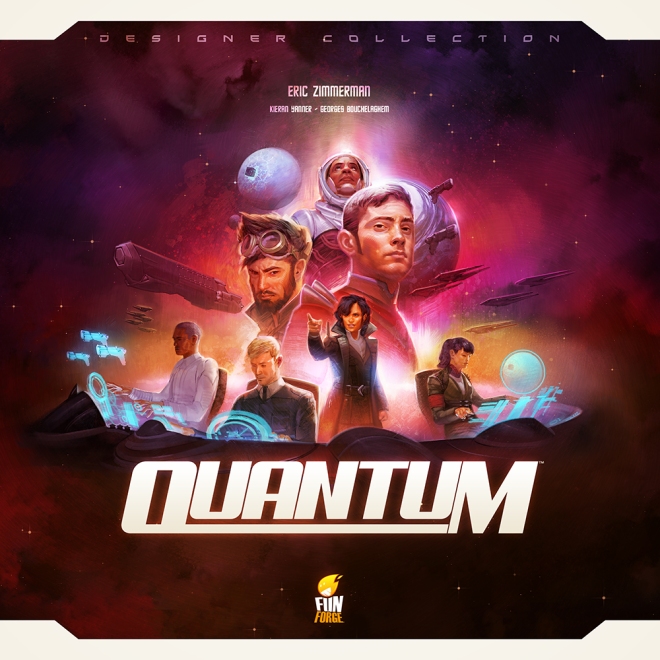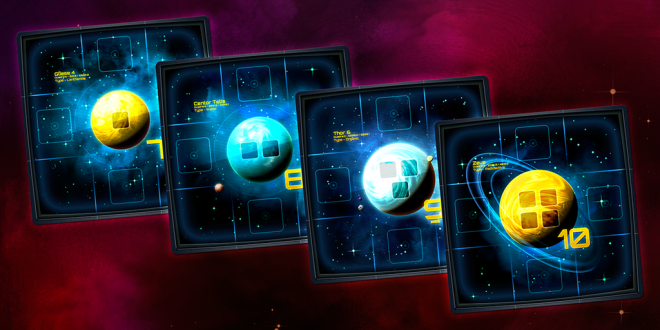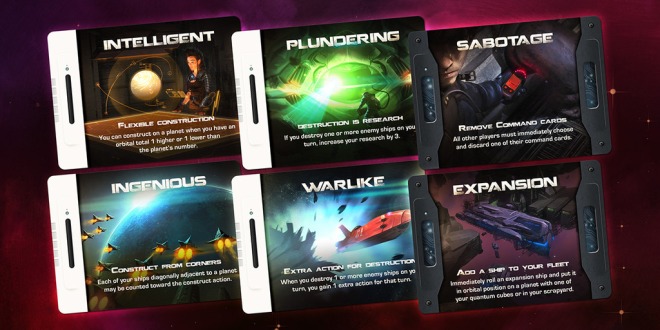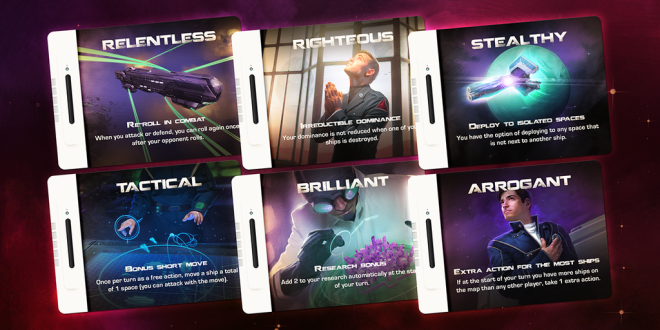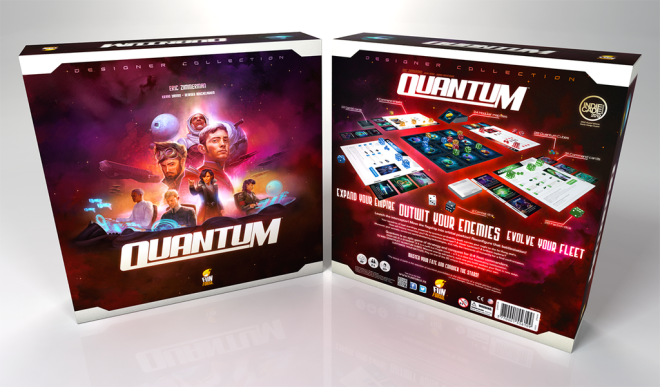Essen 2013 is coming, and I’m about to do a preview of one of the Essen’s games listed to be released. So, what is Quantum all about? Hearing the word ‘Quantum’, most of us would think about science and such. First, let me describe the word ‘Quantum’, before getting too deep.
In short, Quantum is the minimum amount of any physical entity involved in an interaction.
But in long, here is what I got from Wikipedia:
The word “quantum” comes from the Latin “quantus,” for “how much.” “Quanta,” short for “quanta of electricity” (electrons) was used in a 1902 article on the photoelectric effect by Phillip Lennard , who credited Hermann von Helmholtz for using the word in the area of electricity. However, the word quantum in general was well known before 1900.It was often used by physicians, such as in the term quantum satis. Both Helmholtz and Julius von Mayer were physicians as well as physicists. Helmholtz used “quantum” with reference to heat in his article on Mayer’s work, and indeed, the word “quantum” can be found in the formulation of the first law of thermodynamics by Mayer in his letter dated July 24, 1841. Max Planck used “quanta” to mean “quanta of matter and electricity,” gas, and heat. In 1905, in response to Planck’s work and the experimental work of Lenard, who explained his results by using the term “quanta of electricity,” Albert Einstein suggested that radiation existed in spatially localized packets which he called “quanta of light” (“Lightquanta”).[7]
I…don’t understand. Okay, let’s stop make ourselves look more stupid than we are. So, it’s physics and enough of that. But judging by the cover, you can see the game is all about, Sci-fi theme in space? Close or not, you tell me yourself.
The game is published by Funforge, a French board games publisher which also published Antoine Bauza’s Tokaido in previous year. But this time, Quantum is not Bauza’s, it’s designed by Eric Zimmerman. The game can be played from 2 up to 4 players and was listed for 30 minutes of game play. So a quick game with heavy nuance.
Personally I just not interested on the game itself, by many aspects, one being a Sci-fi theme with planets and outer space elements. But, I did read the rules and found that the game has certain feats that provide interesting aspect on the game. So, since it’s quite simple and easy to understand I decided to make a preview for this one.
THE CATCH
In Quantum players compete to be the first player who place all of his Quantum cubes on the board. If one player did that, he immediately wins the game. I can safely conclude that this is a racing game (*sigh, just not my cup of tea). Anyway, let’s look on the them or background of the game. Players command their own fleet from different factions or colonies, though as far as I can see, the different factions provides no other beside the game flavor. During the game, you will take actions that will support your goal to place all of your Quantum cubes in place.
THE MANIFEST
So let’s take a pause from there and look at the components. The artworks are undoubtedly gorgeous, very stunning and perfectly representing high technology, science and space, you can thank that to the artists, Georges Bouchelaghem and Kieran Yanner.
So, what’s in the box?
You can find 24 map tiles that form the game map / board. You only use 9 maps in each game, so there are many various combination for you to try in every game (call that replay value!). Each map tile is broken down into 9 grids with a planet image on the center grid. These planets have different colors and square slots.
There are also 4 Command sheets, one for each player, 28 six-sided dice in 4 different colors acting as ships (yes, their ships are cube-shaped and I understand your confusion and amazement about how ergonomic is that, but I guess the ergo-law is not applicable in space). You will also find 28 small cubes in 4 different color, these are the so-called Quantum cubes. While we all know that the main objective is to place all of your Quantum cubes into the game board, that does not mean you can throw some of the cubes while others not looking (we all know it’s called cheating).
Cards, yes do not forget about the cards. There are 53 cards that contain 2 types of cards, Gambit and Command cards. The last are two combat dice (a simple black and white 6-sided dice).
SETUPS
Before any game, at least one player must prepare the game setup (often is the owner of the game). First, you need to form the space map, draw 9 out of 24 map tiles based on the number listed on the tile (the color does not matter) and place the tiles face-up on the center of the table in 3×3 layout. You can find several layouts in the rulebook for starting planet locations to be set based on number of players, but no matter how many players you still use 9 tiles in each game.
Each player then can choose a color and take the inventories that matches the color, such as Command sheet, 7 dice and 5 Quantum cubes, remember only 5 cubes not 7 (You don’t need to place yourself in more difficult situation from others, no reward for hardcore gamers). Now let’s prepare the Command sheet, by placing one die on the Research box (with 1 pip facing up) and one die on the Dominance box (also with 1 pip facing up). Place your 5 Quantum cubes in the Quantum box. Next each player determines their starting ships by rolling 3 unused dice (for this purpose you can re-roll the 3 dice once). Player with the lowest total of the 3 dice is the starting player and going clockwise the first player place one of his Quantum cubes on the starting location slot (okay, so now you only have 4 cubes left). After that, in player order each player place the 3 dice / ships on the spaces adjacent next to his starting planet (note that orthogonally adjacent not diagonally).
THE MEAT
Okay, now let’s play the game. A player’s turn consists of 2 phases, Action and Advance Cards. During actions, players may take 3 available actions and use ship special abilities. There are 5 possible actions that players can take:
1. RECONFIGURE
When taking this action, you can re-roll one of your ships on the map or scrapyard. The good thing about this roll is, you can always re-roll the die if you get the same result roll. Even with this, it’s still a long shot to get what you want. Maybe you need to look at this differently, this action lets you to change your ship type other that what it is now.
2. DEPLOY
This action lets you to place a new ship from your scrapyard (if any) to any orbital positions on a planet that has your Quantum cube in it. Remember that you cannot place your 2 expansion ships in this manner, only in your scrapyard.
3. MOVE / ATTACK
You can move one of your ships on the map. A ship can only move once per turn and the distance is varied based on the ship’s type. You can attack other ship by end the ship movement in the enemy ship’s space. Ship cannot move through an obstacle (ships and planets are obstacle). The movement range is shown on the die value. A die with 1 value can move 1 space, a die with 6 value can move up to 6 spaces and so on.
4. CONSTRUCT
This action lets you to construct a Quantum cube in a planet. You may construct the cube if only you have ships in the orbital position of the planet with a value exactly equal with the planet’s number. For example you need 2 ships with the value 3 and 5 in the orbital positions of the numbered 8 planet. The hard part is the exactly factor, you need precise value of your ships to construct the cube. This is the only action that uses 2 actions out of your possible 3. Place a cube from your Command Sheet into the empty slot on the planet. And note though, you cannot construct more than 1 cube on the same planet. So this force you to go around the map to place other cubes and face conflict with other players.
5. RESEARCH
This action lets you to increase 1 value to your Research die on you command sheet. You cannot increase the die more than 6, once you increased the die value to 6, you have achieved a research breakthrough, which will be resolved during phase 2.
After a player has already taken his 3 actions, he enters the phase 2 of his turn, Advance Cards. In this phase, players get 1 card based on a research breakthrough (if any) and 1 card per quantum cube they placed during this turn. Once the player take the cards from a research breakthrough, reset the research die back into 1. The turn of that player ends and next player begins his turn.
DOMINANCE AND INFAMY
As you play the game, you will encounter combats against other players. Dominance is a measure of your combat supremacy. When your Dominance die reached 6, you’ll get Infamy and can place a Quantum cube anywhere on the map (without Construct action). Each time you destroy an opponent’s ship, move up your Dominance die by one. Each time your ship is destroyed, move down your Dominance by 1.
After you place a Quantum cube from the Infamy effect, reset the Dominance die back to 1.
ADVANCE CARDS
There are 2 different types of Advance cards, Gambit (black backs) and Command (white backs) cards. The name ‘Gambit’ sounds cool, these type of cards has one time effect, immediately and discarded after use. While Command cards give players permanent abilities and last for the rest of the game. You can have maximum 3 active Command cards at any time. These cards are revealed face up 3 Gambit and 3 Command cards for option. Players can choose to take a card on phase 2 based on these available 6 cards.
THE SHIPS
Onto the most interesting part of the game, the ships! What about the ships? Well, in this game you are playing with 6 different types of ships. These 6 types have their own advantages and purposes. Each type of the ship is known by the value of a die (from 1 to 6 pip). So, you might think that ships with high value are stronger than the lower ones, well think again. It’s the other way around. Ship with the lowest value is the strongest but moves the slowest, while ship with highest value, is the weakest but moves the fastest. Let’s take a look at the ships.
1. Battlestation, is the most powerful ship ever (in this game of course), but they move 1 space only. Special ability of this ship is STRIKE, this ability gives the ship an additional attack.
2. Flagship, can move up to 2 spaces and have a special ability of TRANSPORT, which can carry ship as it moves. It’s not just that, you can carry as many ships as ships within 1 space surrounding the Flagship. With this ability you can combine strategies with your other ships and get the game more interesting (in a way).
3. Destroyer, can move up to 3 spaces and have the ability to SWAP. Yes, as literal as it is, Destroyer can swap itself with one of your ship anywhere on the map. Ain’t that cool?
4. Frigate, can move up to 4 spaces and have a special ability called MODIFY. This ability lets the ship change into a Destroyer (3) or Interceptor (5).
5. Interceptor, can move up to 5 space and what’s cool about this ship is It can MANEUVER, travel diagonally. Yes, you can move / attack diagonally with this ship.
6. Scout, can move up to 6 spaces and has the ability to free-reconfigure itself.
COMBAT
Okay, once you know all the ship’s types let’s get into the combat system. The combat system is absolutely simple, involving the 2 black and white dice and two ships. Players engage in battle not more than 2 ships in each combat. The attacker rolls the black die and the defender rolls the white die. Each player involved add the result to their ships involved in the combat. The lower sum wins and the attacker breaks any tie. So this is one of the game that you want to roll for the lowest number than for the highest one.
If the attacker’s total is equal or less, the defender’s ship is destroyed. The destroyed ship is re-rolled and place it on the scrapyard. The attacker then has the option to move into the defender’s space or move back into the space from which it attacked. If the defender’s total is lower that the attacker, the attacker’s ship is not destroyed and it only move back from which it attacked. So there is no risk for an attacker if the attack is unsuccessful.
OVERALL
The visual presentation of the game looks solid and I like the artworks on the map tiles, and yes, the game box cover is very stunning. The game looks simple and yes at first, the game system is very similar to Pulsar, the game of space exploration, but way more complex. The interesting parts are the dice and the ships abilities that may affect the game play quite a bit. There are 4 factions on the game, each for each player but it’s too bad though the visual presentation of the factions have a good foundation for unique variable player powers, the truth is it’s not. So, not interested in this one, The racing game factor does turn me off.

